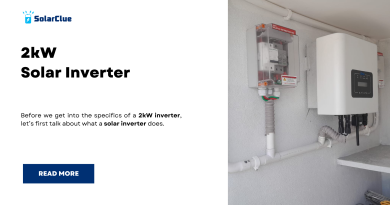Are solar panels more efficient in space?
Solar energy is one of the most abundant and sustainable energy sources available. However, the efficiency of solar panels can vary significantly depending on where they are located. This blog post explores the differences in solar panel efficiency in space compared to on Earth, considering factors such as sunlight intensity, atmospheric conditions, and temperature. We will also analyze the potential advantages and challenges of space-based solar power systems and their future implications.
Table of Contents
- 1 Sunlight Intensity in Space vs. on Earth
- 2 The Impact of the Earth’s Atmosphere on Solar Panel Efficiency
- 3 Temperature Variations in Space and Their Effect on Solar Panels
- 4 The Potential for Higher Efficiency Solar Panels in Space
- 5 Challenges of Space-Based Solar Power Systems
- 6 The Future of Space-Based Solar Power and Its Potential Benefits
- 7 Comparing Space-Based Solar Panels to Terrestrial Solar Panels
- 8 Case Studies of Solar Panels in Space
- 9 FAQ Section
- 10 Conclusion
Sunlight Intensity in Space vs. on Earth
Sunlight Intensity in Space
- Unobstructed Sunlight: In space, solar panels receive sunlight that is not filtered or scattered by the Earth’s atmosphere. This results in more intense and consistent sunlight, leading to higher energy generation.
- Solar Constant: The average solar constant (the amount of solar radiation received per unit area at the distance of Earth’s orbit from the Sun) in space is approximately 1,366 watts per square meter (W/m²).
Sunlight Intensity on Earth
- Atmospheric Scattering: On Earth, sunlight intensity is reduced due to atmospheric scattering and absorption. Factors like clouds, air pollution, and the angle of the Sun can further decrease the intensity.
- Average Solar Irradiance: On a clear day, the average solar irradiance on the Earth’s surface is about 1,000 W/m² at noon at sea level. This is less than the solar constant in space.
Comparison
- Energy Generation: Solar panels in space can potentially generate more energy due to the higher and more consistent sunlight intensity compared to panels on Earth.
The Impact of the Earth’s Atmosphere on Solar Panel Efficiency
Atmospheric Interference
- Absorption and Scattering: The Earth’s atmosphere absorbs and scatters some of the sunlight, particularly in the ultraviolet (UV) and infrared (IR) spectra. This reduces the total amount of solar energy that reaches the Earth’s surface.
- Impact of Weather: Weather conditions, such as clouds, fog, and dust, can further diminish solar panel efficiency by blocking or diffusing sunlight.
No Atmospheric Interference in Space
- Direct Sunlight: In space, there is no atmosphere to absorb or scatter sunlight, meaning solar panels receive the full spectrum of solar radiation. This leads to higher energy conversion efficiency.
Temperature Variations in Space and Their Effect on Solar Panels
Temperature Effects on Earth
- High Temperatures: Solar panels on Earth often operate at higher temperatures, especially in sunny climates. Higher temperatures can reduce the efficiency of photovoltaic (PV) cells by decreasing the voltage output.
- Cooling Mechanisms: Terrestrial solar panels require efficient cooling mechanisms to mitigate temperature-related efficiency losses.
Temperature Variations in Space
- Extreme Temperature Fluctuations: In space, solar panels are exposed to extreme temperature fluctuations, ranging from intense heat when facing the Sun to freezing cold in the shadow of Earth or other celestial bodies.
- Thermal Management: Advanced thermal management systems are required to maintain optimal operating temperatures for solar panels in space.
Comparison
- Efficiency Impact: While space-based solar panels benefit from higher sunlight intensity, they also face challenges due to extreme temperature variations, which require complex thermal management to maintain efficiency.
The Potential for Higher Efficiency Solar Panels in Space
Advanced Materials
- Radiation-Resistant Materials: Solar panels in space are often made from materials that are more resistant to radiation and temperature extremes, such as multi-junction cells that can convert a broader range of the solar spectrum into electricity.
- Higher Efficiency Designs: Space-based solar panels can be designed for maximum efficiency without the constraints imposed by atmospheric interference or land use.
Energy Availability
- Continuous Energy Generation: In geostationary orbit, solar panels can receive nearly continuous sunlight, providing a constant energy source without the day-night cycle that affects Earth-based solar panels.
Challenges of Space-Based Solar Power Systems
Transmission of Energy to Earth
- Wireless Power Transmission: One of the biggest challenges is transmitting the energy generated in space back to Earth. This could potentially be achieved through microwave or laser transmission, but these technologies are still in development and face significant technical hurdles.
- Energy Losses: There are potential energy losses during transmission, which can reduce the overall efficiency of space-based solar power systems.
Cost Considerations
- High Launch Costs: Sending solar panels into space involves high launch costs, as well as the need for durable, lightweight materials that can withstand the rigors of space travel.
- Maintenance and Repair: Maintenance and repair of space-based solar panels are challenging and expensive, often requiring robotic systems or human space missions.
Technological and Logistical Challenges
- Radiation Damage: Solar panels in space are exposed to cosmic radiation, which can degrade their performance over time. Developing radiation-hardened materials is crucial for long-term operation.
- Space Debris: The risk of damage from space debris poses a significant challenge to the durability and longevity of space-based solar panels.
The Future of Space-Based Solar Power and Its Potential Benefits
Benefits of Space-Based Solar Power
- Limitless Solar Energy: Space-based solar power has the potential to provide a nearly limitless supply of clean energy, unaffected by the Earth’s day-night cycle or weather conditions.
- Energy Independence: Countries that invest in space-based solar power could reduce their dependence on fossil fuels and other finite energy sources.
Potential Applications
- Space Exploration: High-efficiency solar panels in space can provide reliable power for space missions, satellites, and space stations.
- Global Energy Supply: If the challenges of transmission and cost can be overcome, space-based solar power could contribute to the global energy supply, particularly in regions with limited access to traditional energy sources.
Technological Advancements
- Improved Solar Cell Efficiency: Ongoing research into multi-junction cells and other advanced solar technologies could significantly improve the efficiency of both space-based and terrestrial solar panels.
- Energy Beaming: The development of safe and efficient energy beaming technologies, such as microwave or laser transmission, will be crucial for the success of space-based solar power systems.
Comparing Space-Based Solar Panels to Terrestrial Solar Panels
| Aspect | Space-Based Solar Panels | Terrestrial Solar Panels |
|---|---|---|
| Sunlight Intensity | Consistently high due to lack of atmospheric interference | Variable due to atmospheric absorption, scattering, and weather conditions |
| Temperature | Extreme fluctuations require advanced thermal management | High temperatures can reduce efficiency; cooling mechanisms needed |
| Energy Generation | Continuous in geostationary orbit; higher potential efficiency | Limited by day-night cycles and weather |
| Cost | High due to launch, maintenance, and advanced materials | Lower, but dependent on land use and installation costs |
| Transmission to Earth | Requires advanced technology like microwave or laser beaming | Direct use or grid connection, simpler infrastructure |
| Maintenance and Repair | Challenging and costly, often requiring space missions | Accessible and relatively easy to maintain |
| Environmental Impact | Minimal impact on Earth’s environment, but space debris is a concern | Land use and environmental impact on terrestrial ecosystems |
| Durability | Exposed to radiation and space debris, requiring specialized materials | Exposed to weather, but easier to repair and replace |
Case Studies of Solar Panels in Space
International Space Station (ISS)
- Application: The ISS is powered by solar panels that convert sunlight into electricity, providing continuous power for the station’s systems and experiments.
- Efficiency: The ISS solar panels are designed for maximum efficiency in the vacuum of space, utilizing advanced materials to withstand radiation and temperature extremes.
Geostationary Satellites
- Application: Many geostationary satellites rely on solar panels for power, ensuring continuous operation for communication, weather monitoring, and other functions.
- Efficiency: These panels are optimized for constant sunlight exposure, providing reliable power for satellite operations over long periods.
FAQ Section
1. Why are solar panels more efficient in space than on Earth?
Solar panels in space are more efficient because they receive unfiltered sunlight without atmospheric interference and can operate continuously without the day-night cycle that affects panels on Earth.
2. What are the main challenges of space-based solar power systems?
The main challenges include the high cost of launching and maintaining solar panels in space, the need for advanced materials to withstand radiation and temperature extremes, and the difficulty of transmitting energy back to Earth.
3. How does temperature affect solar panels in space?
Solar panels in space face extreme temperature fluctuations, requiring advanced thermal management systems to maintain optimal efficiency.
4. Can space-based solar power be used on Earth?
Yes, but it requires technology to transmit the energy back to Earth, such as microwave or laser beaming, which is still in development.
5. What are the potential benefits of space-based solar power?
Space-based solar power offers the potential for limitless, continuous energy generation that is unaffected by the Earth’s weather or day-night cycle, potentially contributing to global energy needs.
Conclusion
The comparison between solar panels in space and on Earth reveals significant differences in efficiency, driven by factors such as sunlight intensity, atmospheric conditions, and temperature. While space-based solar power offers higher efficiency and continuous energy generation, it also faces substantial challenges, including transmission, cost, and maintenance. As technology advances, the potential for space-based solar power to complement terrestrial solar energy and contribute to a sustainable future grows, making it an exciting area of research and development.



